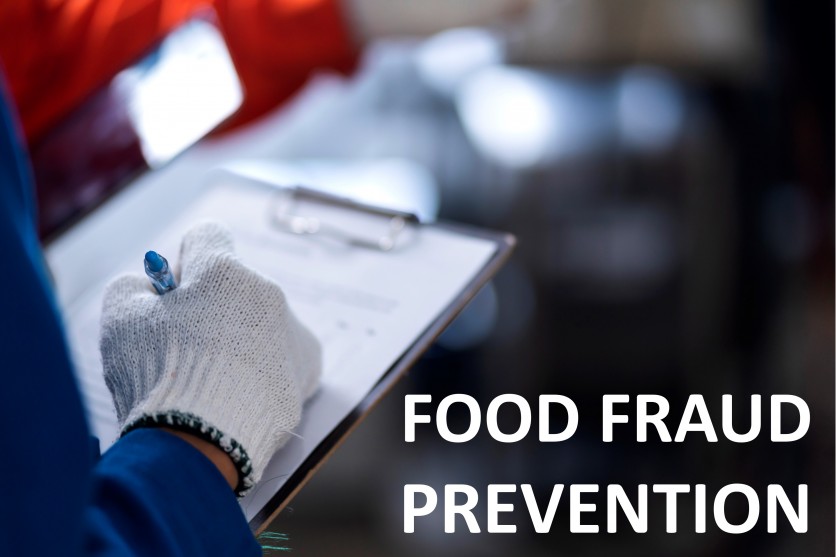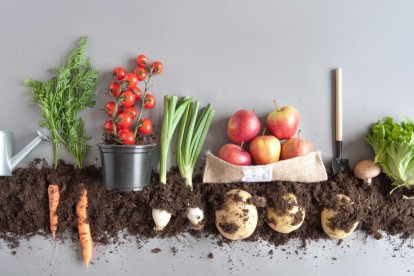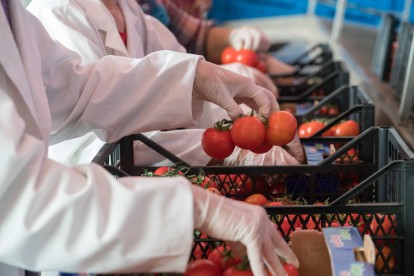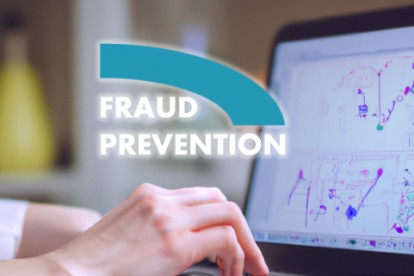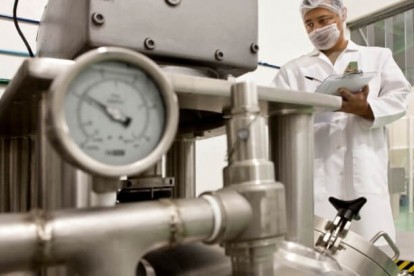Food authentication solutions as a tool in the food fraud risk mitigation plan
A comparative presentation of the records per quarter helps to identify trends from actual detection of fraud incidents in our laboratories. 2024 started with increased rates of detected fraudulent cases (12,7%), with a decreasing trend during the following two quarters of the year. The remarkably low rate in Q3 (5,4%) was followed by double rate in Q4 (11,9%). The respective figures per product group elucidate areas of higher risk. Flavors suffered from high rates of fraud for the first half of the year, retaining high number of detected non-conformities. Spikes appear for dairy/cheese in Q1 (extreme) and Q2, and spices in Q3. Last but not least, consistently high rates of fraud are recorded in honey/ syrup/ sugar and fruits & vegetables categories, highlighting the high vulnerability of these sectors currently.
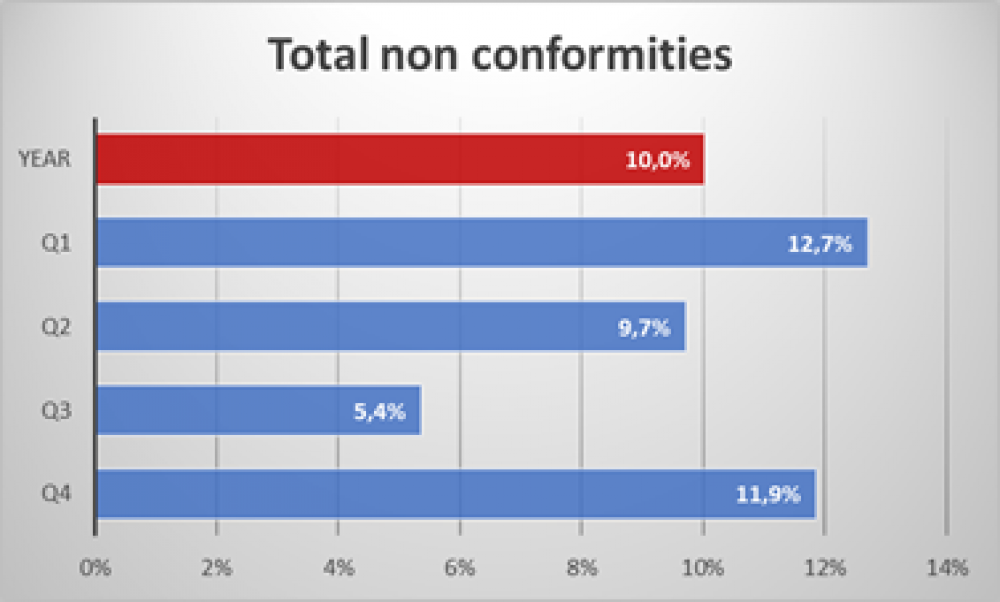
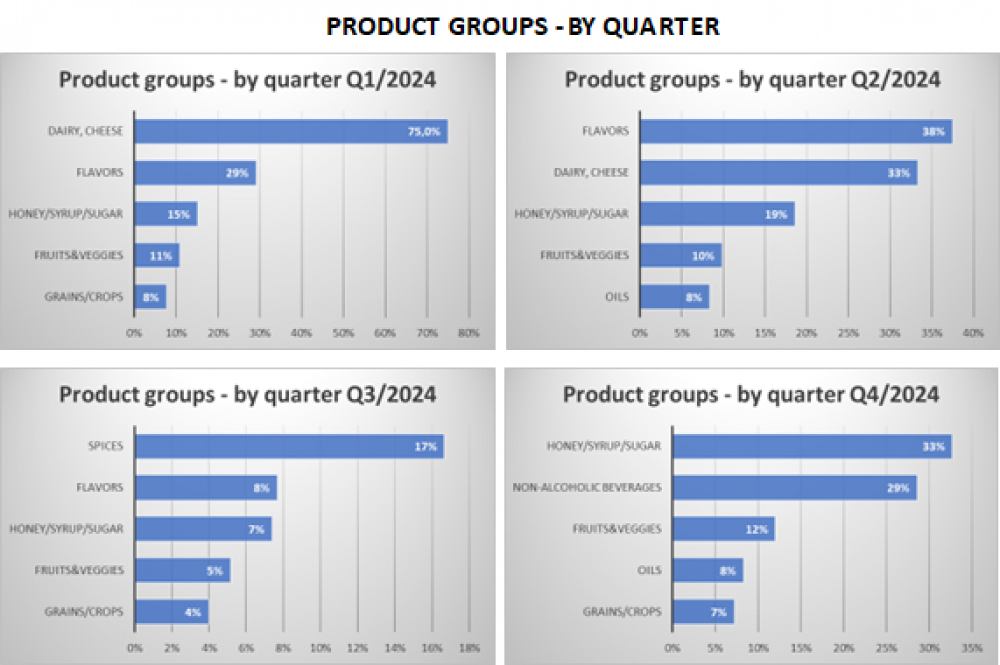
2024 TOTALS - BY FRAUD TYPE
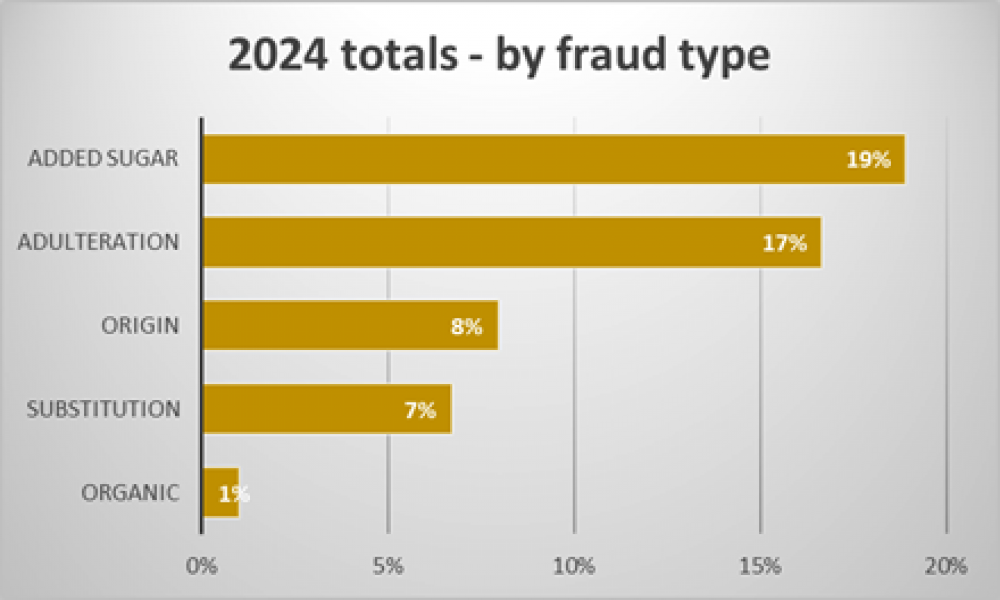
During 2024, the total annual frequencies of non-conformities indicated that non-declared added sugar (in multiple product groups) was the most common fraud type, closely followed by adulteration (water dilution, ethanol addition, enrichment with synthetic substances etc), geographical origin mislabeling and substitution (mixed species, botanical origin).
2024 TOTALS - BY PRODUCT GROUP
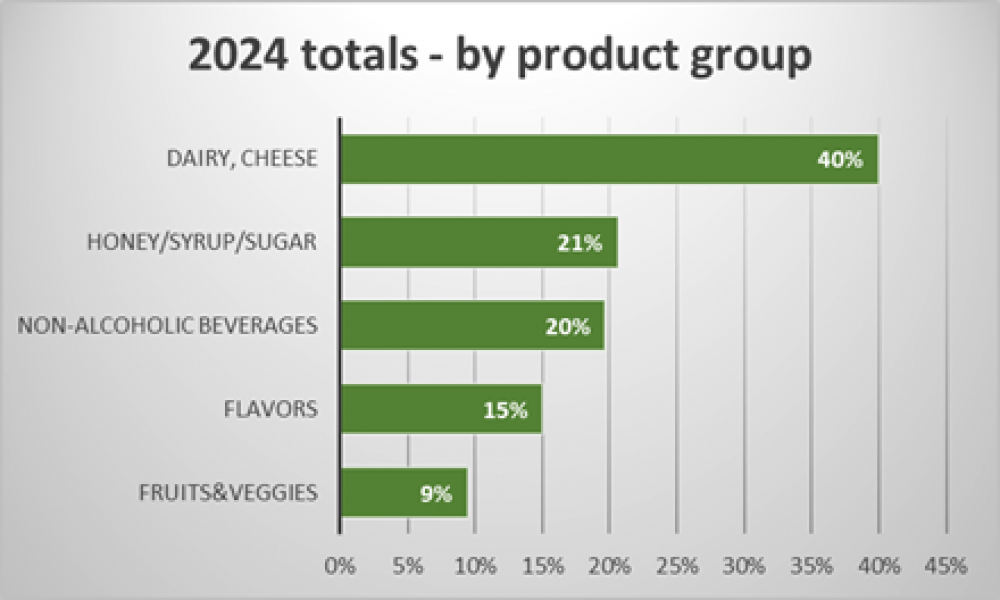
Dairy/cheese was the most victimized sector for 2024, mainly due to the devastating rate of non-conformities in Q1 and Q2 (focus: provenance of PDO cheese). Honey/ syrup/sugar and non-alcoholic beverages were affected by high rates of non-conformities all along the year (focus: added sugar). These groups reflect current risks in global supply chains. Flavors and fruits&veggies were steadily ranked high during 2024 as victims of fraud, a worrying finding due to the high number of test subjects in these categories in 2024.
Data source: Imprint Analytics GmbH
Note: the records and figures from laboratory findings are a direct reflection of trends and real-time conditions. Nevertheless, they can be biased by different factors, such as types of submitted samples or relative risk in certain samples regarding adulteration probability.
Success Story - Bohemia Sekt
BOHEMIA SEKT s.r.o. and Imprint Analytics GmbH collaborate to ensure authenticity and quality in sparkling wine production
Success Story - Lidl Austria
Lidl Austria and Imprint Analytics GmbH cooperate to secure regional production and ensure integrity in national supply chains
Navigating the Landscape of Food Authenticity in Agriculture
Check out our brand new expert article concerning Food Authenticity
Food Fraud Records 2023
Food authentication solutions as a tool in the food fraud risk mitigation plan
Food Safety Briefing with David Psomiadis still available on demand
Amidst a rising tide of food fraud, the quest for authenticity and transparency becomes more vital than ever. While the food companies struggle to navigate between new regulations on sustainability, ESG and responsible sourcing, consumers raise their demands and expectations. Let's unveil the secrets hidden in our plates and cultivate a culture of authentic food.
Imprint Team walking ...
Our amazing walking champs participated in the 10th Burgenland Women's Run (10. Burgenländischer Frauenlauf) in Lutzmannsburg last Sunday!

